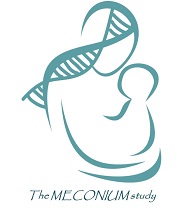Genetics and Genomics of IBD
Inflammatory bowel disease (IBD) involves chronic inflammation of all or part of the digestive tract. IBD primarily includes ulcerative colitis and Crohn’s disease. Familial aggregation and higher concordance rates in monozygotic than dizygotic twins have provided robust evidence for the involvement of genetic factors in the disease etiology. An important epidemiological feature of IBD is that it occurs at significantly different frequencies in different ethnic, demographic and racial groups, and has the highest prevalence among individuals of Ashkenazi Jewish descent.
We are taking advantage of an ongoing recruitment and the world class Division of Gastroenterology at Mount Sinai to conduct genetic, genomic, microbiome, systems biology and functional studies of IBD with the focus on the Ashkenazi Jewish population. We are particularly interested in large families with multiple affected individuals. Our goal is to detect genetic mutations that significantly contribute to the development of IBD and functionally validate them. This knowledge of the genetic risk may help identify individuals at high risk of developing the disease and discover new pharmaceutical targets to prevent, postpone and/or treat IBD.
IBD and Parkinson’s disease
Parkinson’s Disease (PD) is the second most common neurodegenerative disease worldwide. Multiple factors contribute to the development and severity of PD including genetics, aging, bacterial composition in the gut and inflammation. Recent studies have shown bi-directional communication between the gut and the brain. PD patients report experiencing gastrointestinal symptoms many years before the development of PD and Crohn’s disease patients have been found to have an increased risk of PD. Genetic studies have found a link between PD and inflammatory bowel disease (IBD). Our lab is looking at a gene called LRRK2 that occurs in 1-2% of PD population and also in IBD. These studies look at the different IBD subtypes of PD based on genetic risk, levels of gut inflammation and bacterial composition and identify particular inflammatory process involved in PD. We are using data analysis to study the relationship between IBD and PD and better understand the link between intestinal inflammation and neurodegenerative diseases, focusing on correlating biomarkers, fecal microbiota diversity and genetics inflammatory burden to PD phenotypes. Additionally, we are analyzing whether individuals who are treated with anti-TNF-a have a lower risk of PD than individuals not receiving anti-TNF-a.
The MECONIUM Study
IBD affects women during their reproductive years and 25% become pregnant after an initial diagnosis. Accumulating evidence suggests that newborn babies are not microbe-free and the types of bacteria found in their first stool, also known as meconium, have been linked to maternal diseases, including diabetes and eczema. The source of these microbes is of continued interest, because the initial colonization of bacteria is believed to play a crucial role in the development of the infant’s immune system and consequently the protection against the risk of diseases later in life.
 The MECONIUM (Exploring MEChanisms Of disease traNsmission In Utero through the Microbiome) study is aimed to compare the bacterial profiles of women with and without IBD during pregnancy and identify bacteria passed from mothers with IBD. Moreover, the goal is to explore the role of genetic make-up, disease activity throughout pregnancy, medications and clinical features on the bacterial composition of the baby. In addition, we will assess if feeding behavior (breastfeeding versus formula) and/or antibiotic use early in life help modify the microbiome. Given that the maternal gut bacteria can be manipulated by diet, food supplementation, and other ways, our study can help identify the types of bacteria that need to be altered prior or during pregnancy to significantly reduce the IBD risk transmission.
The MECONIUM (Exploring MEChanisms Of disease traNsmission In Utero through the Microbiome) study is aimed to compare the bacterial profiles of women with and without IBD during pregnancy and identify bacteria passed from mothers with IBD. Moreover, the goal is to explore the role of genetic make-up, disease activity throughout pregnancy, medications and clinical features on the bacterial composition of the baby. In addition, we will assess if feeding behavior (breastfeeding versus formula) and/or antibiotic use early in life help modify the microbiome. Given that the maternal gut bacteria can be manipulated by diet, food supplementation, and other ways, our study can help identify the types of bacteria that need to be altered prior or during pregnancy to significantly reduce the IBD risk transmission.
The MELODY Trial
 Data from The MECONIUM Study showing that maternal gut bacteria can be manipulated by diet, coupled with the nutrition and diet knowledge of our team at the University of Massachusetts Chan Medical School birthed the MELODY Trial (Modulating Early Life MicrObiome through Prenatal DietarY Intervention in Crohn’s Disease) in 2019. This trial is looking to study whether a noninvasive diet intervention implemented by women with IBD during the third trimester of pregnancy can beneficially shift the microbiome, or the bacterial flora of the mother’s body to improve maternal outcomes and the development of a healthy immune system in their baby.
Data from The MECONIUM Study showing that maternal gut bacteria can be manipulated by diet, coupled with the nutrition and diet knowledge of our team at the University of Massachusetts Chan Medical School birthed the MELODY Trial (Modulating Early Life MicrObiome through Prenatal DietarY Intervention in Crohn’s Disease) in 2019. This trial is looking to study whether a noninvasive diet intervention implemented by women with IBD during the third trimester of pregnancy can beneficially shift the microbiome, or the bacterial flora of the mother’s body to improve maternal outcomes and the development of a healthy immune system in their baby.
Cardiovascular Disease
With over a third of persons living with HIV (PLH) being over 50 and cardiovascular disease (CVD) occurring at a higher rate in PLH, we are likely to witness a dramatic rise in the incidence of CVD in this population over the next decade. The underlying pathogenesis of cardiometabolic complications in PLH has not yet been fully elucidated with the unique risk factors only partially accounting for increased CVD-related risks among PLH. In recent years, there has been rapid growth in understanding the genetic basis for CVD in the general population; however, there is very limited data related to the impact of genetics on CVD in PLH. The goal of this study is to assess if the genetic risk burden can help explain a higher risk of CVD in PLH with exposure to antiretroviral therapy and identify therapeutic opportunities to mitigate CVD-related complications using the shared HIV/CVD molecular networks.
Craniosynostosis Network
Craniosynostosis is a common malformation occurring in ~4 per 10,000 live births in which the sutures close too early, causing long-term complications for normal brain and skull growth. Most often, craniosynostosis appears as an isolated, nonsyndromic, anomaly. Unilateral or bilateral fusion of the coronal suture accounts for 20–30% of all nonsyndromic craniosynostosis cases. The etiology of nonsyndromic coronal craniosynostosis is not well understood, although the published literature suggests that it is a multifactorial condition. About 5–14% of coronal craniosynostosis patients have a positive family history, with a specific genetic etiology identified in >25% of nonsyndromic coronal craniosynostosis cases. Yet, the other causes for nonsyndromic craniosynostosis and its phenotypic heterogeneity remain largely unknown. In the first and only genome-wide association study of nonsyndromic craniosynostosis our group identified two regions, downstream of BMP2 gene and within BBS9 gene, associated with a 4-5 fold increased risk of sagittal nonsyndromic craniosynostosis. Although BMP2 and BBS9 are genes with a role in skeletal development, there are several genes that are yet to be identified.
Given that the phenotypic characterization of nonsyndromic coronal craniosynostosis is incomplete and that its causes remain largely unknown, the objective of Craniosynostosis Network is to identify and functionally validate genes and biological pathways contributing to common forms of nonsyndromic coronal craniosynostosis and to the related continuum of craniofacial phenotypes.
